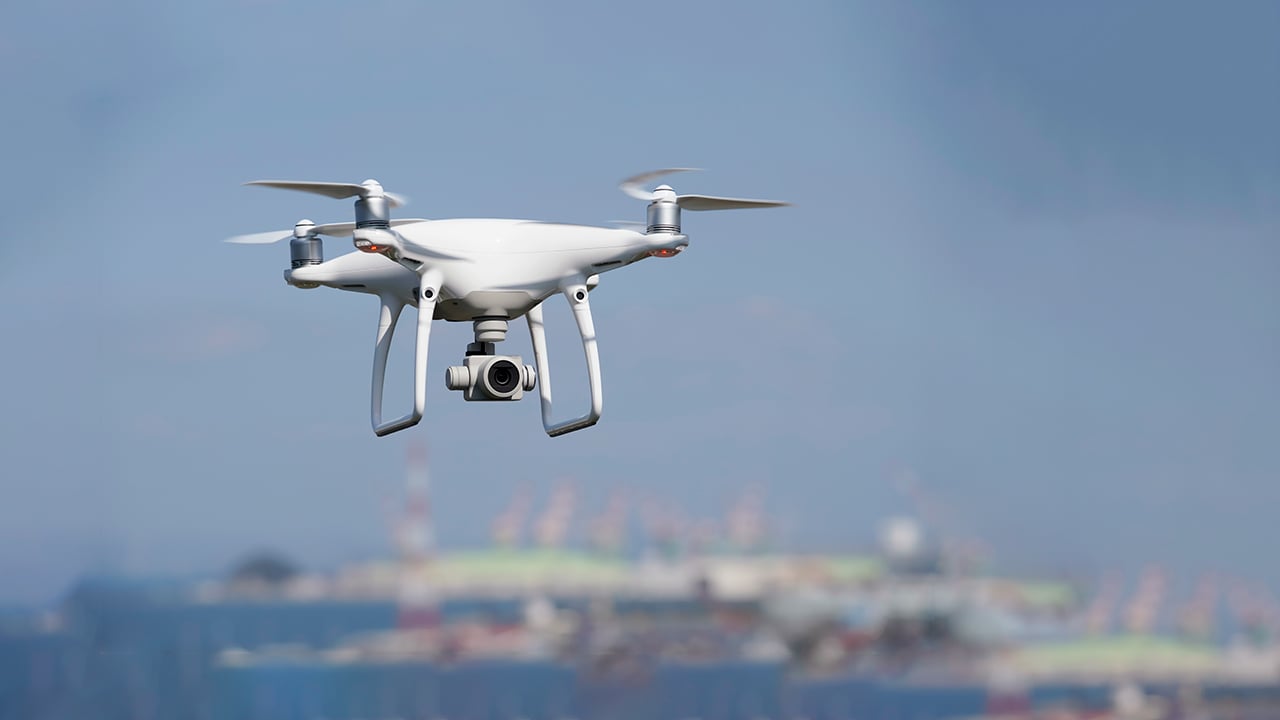Until recently, the best way to inspect a commercial roof was to physically climb on top of it and look around. While getting a close-up view of the rooftop is certainly the best way to check for defects, it’s also potentially quite dangerous, as there’s an increased risk of a slip-and-fall accident. In addition, an untrained inspector can cause unintentional damage by crushing roof panels and piercing the roof membrane.
Technology may have an answer: drones and thermal imaging cameras. Drones can improve your roof maintenance plan and give you a more accurate picture of the state of your roof. Using this technology alongside rooftop access and support systems, commercial building managers can conduct safer inspections as part of a comprehensive roof maintenance plan.
As Always, Start with Documentation
The advent of cool new technology doesn’t mean that you can just throw out what worked well before. If you want to revise your roof maintenance plan, start with the basics. Document the history of the roof, including original products used and dates of installation and repairs. This will offer the best starting point for creating an appropriate plan. In addition, this documentation will enhance the effectiveness of the technological improvements that you’ll try out later.
The real advantage of new roof inspection methods is that they let you safely inspect all areas of your roof. Even when you use access platforms, there will still be some areas that workers can’t see. A drone can capture these difficult or dangerous spots. Meanwhile, thermal cameras can inspect areas in a wavelength that humans can’t perceive. Having documentation will let you contextualize the results of these inspections.
Using Drones to Augment Roof Inspections
When it comes to roof inspections, drones offer several advantages.
The first advantage is safety. There’s no risk of a flying drone falling off the roof. A drone doesn’t get tired, and their attention doesn’t wander. If the operator’s attention wanders, many commercial drones have automated collision-avoidance features that can prevent them from bumping into buildings. Even in the worst-case scenario, an accident involving a drone inspecting a rooftop causes very little risk to human safety.
Second, drones can capture details that humans can’t. A drone, for example, can hover dozens or hundreds of feet above your roof, allowing it to capture patterns of wear and tear that a human might not be able to perceive at eye level. In addition, it can be maneuvered into areas, such as behind or underneath heavy equipment, that a human wouldn’t be able to climb into. Using equipment supports and platforms makes it even easier for drones to capture detailed, quality images.
Lastly, drones record video. This means that a professional can easily go back and point out problem areas for later review.
One caveat—drones aren’t toys. The FAA has rules for commercial drone operators, which means that it’s best to hire a professional for this kind of work.
Using Thermal Cameras to Spot Hidden Leaks
Drones can get to places that humans can’t—but what about seeing things that aren’t in the visual spectrum?
Thermal imaging is another way to spot problem areas on your roof, and one that can be of great utility if you’re trying to reduce your energy bills or stop moisture damage.
The big utility of thermal imaging is its ability to see areas that are cooler or warmer than others. If you take a thermal imaging camera and point it at the roof on a cold day, you may see a few patches that are warmer (redder) than the others. These patches may represent almost invisible damage to your roof membrane or insulation—i.e. areas where warm air is escaping from your roof.
In addition, these surveys can help you understand where moisture may be infiltrating your roof. Areas of wet insulation will show up as large warm or cool patches (depending on whether your building is being heated or cooled). This is because wet insulation is less effective and will not efficiently trap warm or cold air within the building.
Fun fact—several commercial drone systems have thermal cameras installed or available as options, so you can easily combine these two forms of inspection for a more effective roof survey.
Maintain Your Commercial Roof with PHP Systems/Design
Once you’ve pinpointed an area of the roof for maintenance, you’re still going to need to send human workers up there to repair it. This means you’ll need a system to keep your personnel safe and protect delicate roof structures. With PHP Systems/Design, you get products that are designed to meet your building environment’s specific needs and work in tandem with one another to enhance safety and longevity. From pipe and equipment supports to access platforms, our zero penetration solutions simplify regular roof maintenance.




